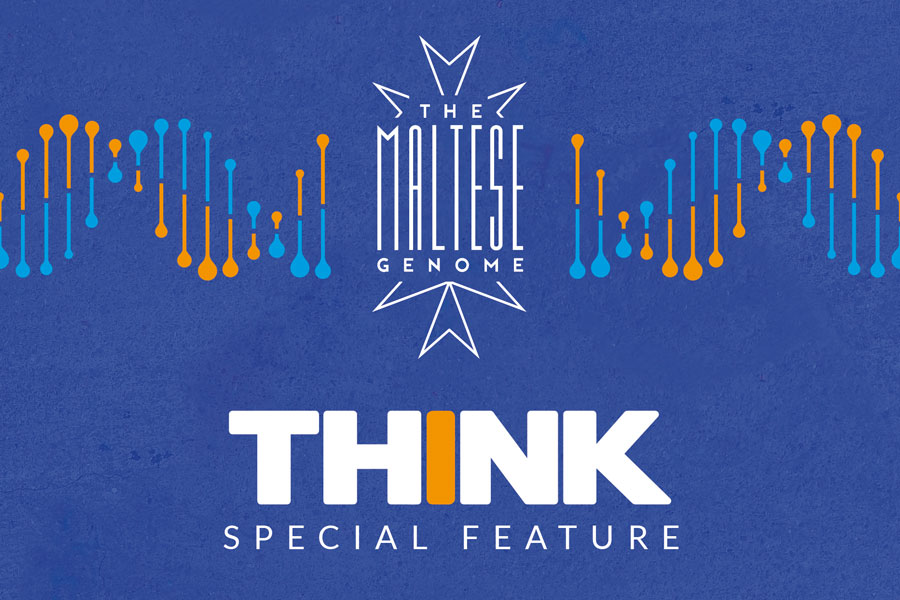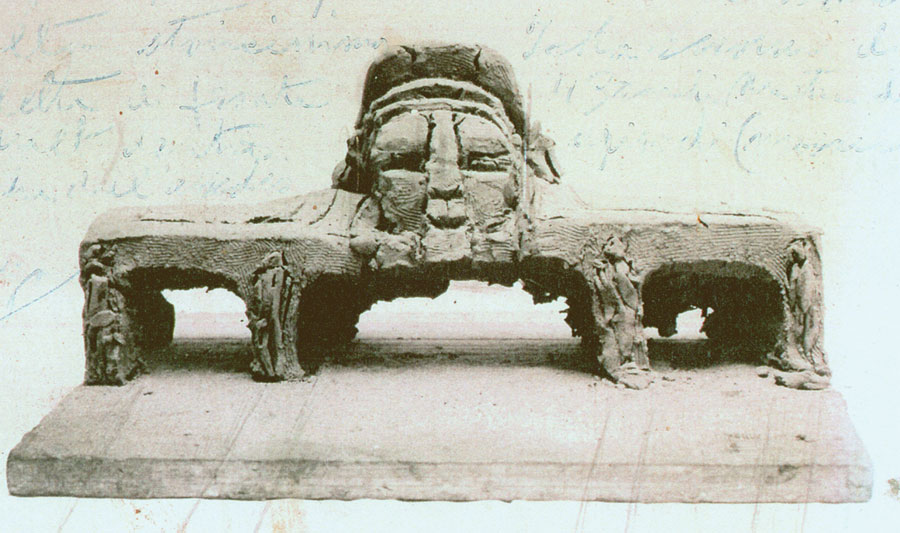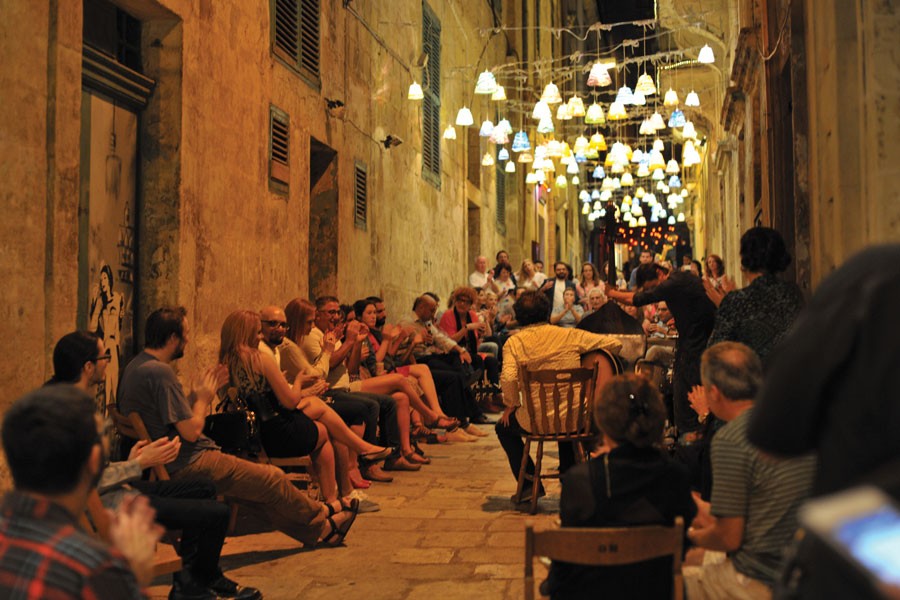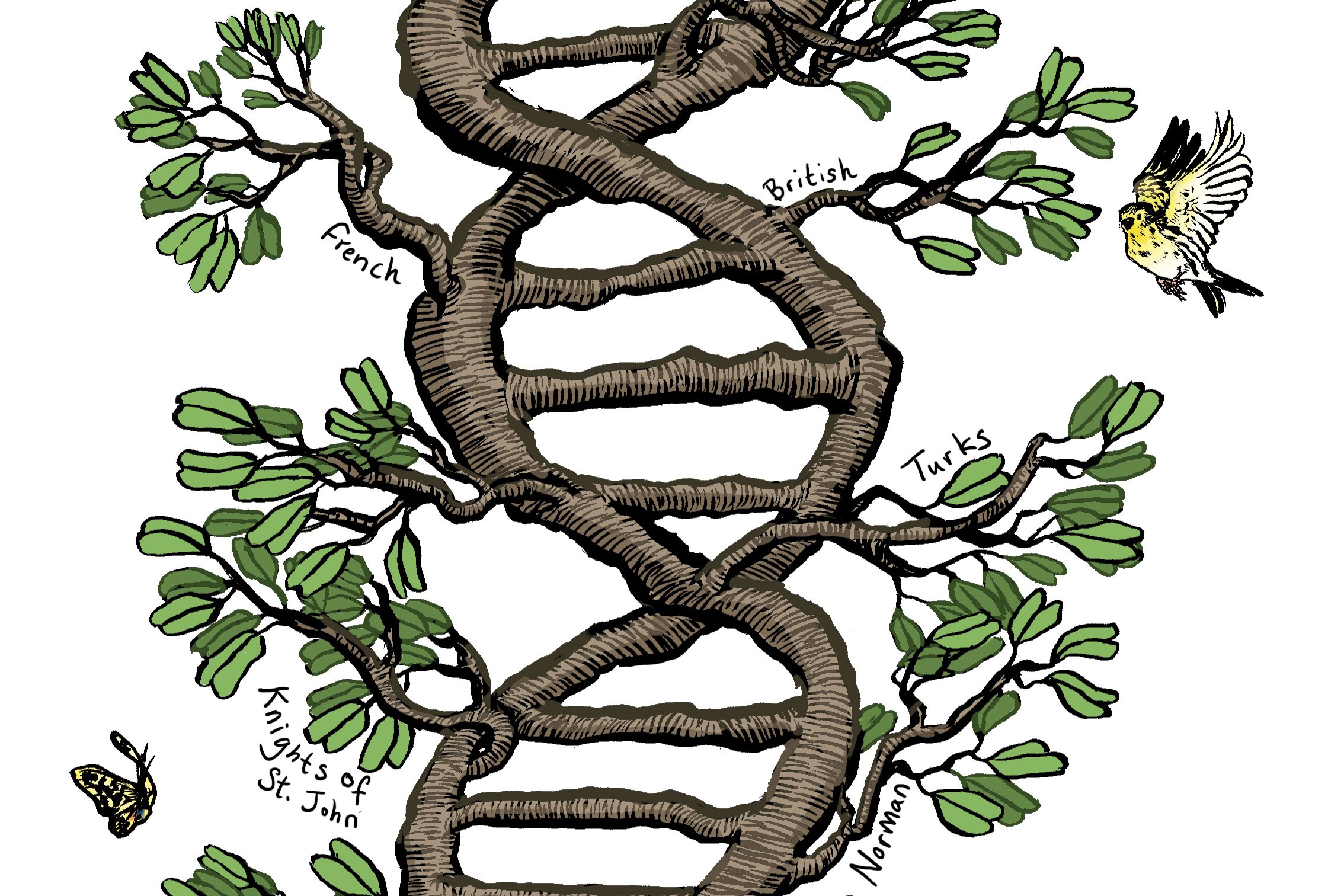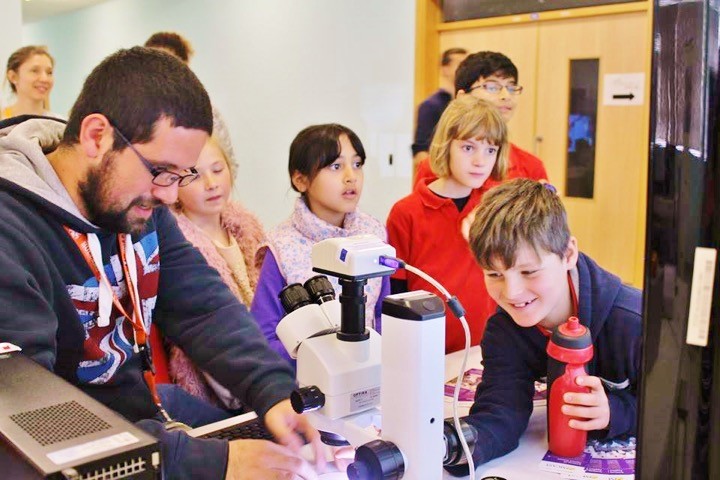When desalination is the only option left
The Water Services Corporation (WSC) has recently announced that it will construct a Seawater Reverse Osmosis Plant at Ħondoq ir-Rummien in Gozo. To the casual observer, having a reverse osmosis plant on the island might seem like a necessary and commendable way of ensuring an adequate and independent water supply. However, Gozo has been meeting its water demands efficiently through a groundwater polishing plant since 2005, importing just 20% of its water from the Ċirkewwa reverse osmosis plant, a facility that is not being used to capacity. So a pertinent question arises: why is a reverse osmosis plant being considered?
Special Feature – The Maltese Genome
DNA is what life is made of. Found in every cell of the human body, it has sent criminals to jail and been the focus of controversial court cases. Dr Jean Buttigieg discusses these legal and ethical issues. DNA has also transformed the meaning of being human, with traits from disease to intelligence all linked to it. DNA is changing the world.
Modern European sculpture
French sculptor Auguste Rodin (1840–1917) is the progenitor of modern sculpture. He rebelled against idealised forms in order to express the inner truths of humanity in his artworks. His successors went on to challenge his work, continuing to explore the aesthetic revolution he had started. Key examples include Henry Moore (1898–1986), Alberto Giacometti and the largely undiscovered Swiss sculptor Hans Josephsohn (1920–2012).
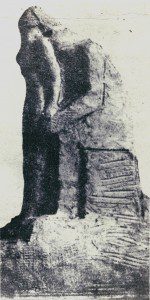
These artists were studied alongside Maltese sculptor Josef Kalleya (1898–1998) at the conference entitled ‘Peripheral Alternatives to Rodin in Modern European Sculpture’ (December, 2015). The international speakers created significant links between works by renowned sculptors and Kalleya, who has been poorly understood by his contemporaries and is unknown outside Malta. Kalleya developed unique methods of creating photomontages alongside the innovative use of a knife to create powerful visceral incisions as a means of moulding his sculptures. He managed to create a new aesthetic.
The conference brought scholars from all over Europe to discuss these and other European sculptors. The scholars debated topics from the mutation of the human form to an artist’s sense of heritage. The event focused on pioneering sculptors who went beyond their current socio-political context. It also helped place Malta’s own Kalleya deservedly on the international map.
The conference and exhibition were organised by the Department of History of Art, Faculty of Arts, University of Malta. The events were convened by Dr Giuseppe Schembri Bonaci and curated by Nikki Petroni. Other participants included Dr Sophie Biass-Fabiani (Musée Rodin, Paris), Dr Jon Wood (Henry Moore Foundation, Leeds), Barbara Vujanović (Atelijer Meštrović, Zagreb), Dr Julia Kelly (Loughborough University), and Ulrich Meinherz (Kesselhaus Josephsohn, St Gallen).
Maltese Cultural Participation: What do the people want?
Malta is rich in culture—that is a fact beyond contention – and whose vast range of cultural activities attract different people with varied interests. But how does this fit in the context of Valletta being the European Capital of Culture (ECoC) in 2018?
Before delving into the many questions that surround this, one needs to perhaps address what we understand by the term ‘culture’ – are we talking about traditions or art? Cultural participation in Malta is often believed to be low, and a Eurobarometer survey carried out in 2013 confirmed that the Maltese are among the least active participants in culture in Europe. However, culture is not something that can be given a clear-cut definition. The term can refer to anything from art exhibitions to the more popular, traditional festi (feasts). Such feasts are not taken into consideration by many surveys like the Eurobarometer.
The Valletta 2018 Foundation’s research department has therefore embarked on a five-year research process (2015–2019) whereby it aims to understand the factors that affect cultural participation to create a body of research that will shed light on participation in the sector. The research will help artists, cultural practitioners, and policy makers.
Last year, the Valletta 2018 Foundation conducted the first in a series of surveys that are looking into cultural participation in Valletta. The survey, carried out in collaboration with the National Statistics Office, asked 1,138 respondents about their preferred cultural activity. The top three cultural activities the Maltese public enjoyed were citywide activities such as Notte Bianca, followed by Carnival, and visits to museums and historical sites.
The events took place in Valletta and registered more active participation from residents than from those living outside the city’s walls. Valletta residents are more likely to have attended artistic exhibitions and events when compared to non-Valletta residents (18% vs 12%). People from the island’s Northern Harbour region (the area around Marsamxett Harbour and neighbouring areas) placed second after Valletta residents in their likelihood to have attended some form of cultural event in the capital. On average, 35% of residents from the Northern Harbour region have attended some form of cultural activity in Valletta, compared to an average of 15% from other regions. These statistics give the impression that physical proximity plays an important role in the degree of cultural participation. People commented on the pleasant atmosphere and the sense of unity events created while others said that such events make for a different kind of family outing.
The Maltese people also seem to enjoy the performing arts. Other popular activities include going to the cinema or attending film screenings, artistic exhibitions and events, live music and live theatre events. These are followed by the Valletta parish feasts—more traditional activities tied to the city itself. Dance is not as appreciated as other performing arts disciplines, with a staggering 94% of respondents claiming they had never attended a dance performance. The only other activities less well-attended are passion plays in Easter time (95% never attended) and the Regatta (96% never attended).
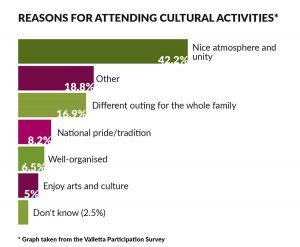 The general consensus of the respondents was that Valletta is a cultural city which is improving in terms of its cultural offerings as well as its image. However, attendance for Valletta’s cultural events is still relatively low with people showing a lack of interest in cultural activities (38% of respondents claimed that they do not attend cultural events as they are simply “not interested”). This statistic is a concern in the light of the fact that Valletta will be capital of culture in just two years. It is the role of the Foundation to use these findings to find new opportunities that can boost cultural participation and encourage engagement with cultural activities. This data can also help other entities and practitioners in the sector.
The general consensus of the respondents was that Valletta is a cultural city which is improving in terms of its cultural offerings as well as its image. However, attendance for Valletta’s cultural events is still relatively low with people showing a lack of interest in cultural activities (38% of respondents claimed that they do not attend cultural events as they are simply “not interested”). This statistic is a concern in the light of the fact that Valletta will be capital of culture in just two years. It is the role of the Foundation to use these findings to find new opportunities that can boost cultural participation and encourage engagement with cultural activities. This data can also help other entities and practitioners in the sector.
The Foundation has developed a varied cultural programme, which is open, engaging, and accessible. To complement the aforementioned Valletta Participation Survey, the Foundation has also carried out an in-depth, qualitative analysis of its cultural programme. This research shows that the Valletta 2018 Cultural Programme not only includes projects related to the visual arts and feasts in Valletta, but also other community projects, aiming to eliminate barriers that prevent cultural participation and that allow for the co-creation of cultural activities and audience development. The study shows how the Foundation is taking a contemporary approach in developing cultural projects, by looking at a long-term development process and aiming for a long-lasting legacy. This research shows how that, to date, the Valletta 2018 Cultural Programme has focused on community and interdisciplinary projects, as well as projects involving music and film.
Both the Valletta Participation Survey and the qualitative analysis of the Valletta 2018 Cultural Programme will continue to be carried out in the coming years. Such studies explore the relationship between the cultural programme and participation countrywide in order for changes in the level of cultural participation in the Maltese Islands can be compared.
The Valletta 2018 Evaluation and Monitoring research process is a five-year project (2015–2019) that is looking into the impacts of Valletta 2018 on the country. The Valletta Participation Survey is a study carried out in collaboration with the NSO that takes place on a biannual basis. The qualitative study, titled ‘A Comprehensive Analysis of the Valletta 2018 Cultural Programme’ is being carried out by Daniela Blagojevic Vella.
The Hidden History of the Maltese Genome
By reading someone’s DNA one can tell how likely they are to develop a disease or whether they are related to the person sitting next to them. By reading a nation’s DNA one can understand why a population is more likely to develop a disease or how a population came to exist. Scott Wilcockson talks to Prof. Alex Felice, Dr Joseph Borg, and Clint Mizzi (University of Malta) about their latest project that aims to sequence the Maltese genome and what it might reveal about the origins and health of the Maltese people.
Systematic Failure, Persistence and Success – A Table of Early School Leavers
In Europe, around one in 10 students (18-24 years old) is an ‘early school leaver’. For Malta, it is one in five. A fifth of our local student population is neither in school, nor in training, and with less than five SEC exams under their belt, Malta’s public education investment (~6% GDP) is not seeing much fruit. Cassi Camilleri speaks to Prof. Carmel Borg about what is needed to abandon the antiquated system our communities are being marred by. Photography by Elisa von Brockdorff.
Beyond Lab Coats and Microscopes
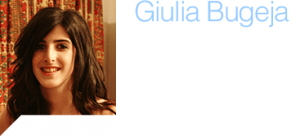 Pride. That’s what Enrico felt when his name was announced at the Science Expo as the winner of the NSTF Contest for young scientists. The contest is a first step helping to build what Enrico Zammit Lonardelli calls his ‘scientific character’. It is a journey that led him to compete on an international level in Milan to represent Malta, meet and talk to incredible people, and learn about the way in which science is carried out all over the world. Feelings of honour, fulfilment, and success quickly followed. ‘Being surrounded by the best people in Europe in all possible aspects and fields of science was simply amazing.’
Pride. That’s what Enrico felt when his name was announced at the Science Expo as the winner of the NSTF Contest for young scientists. The contest is a first step helping to build what Enrico Zammit Lonardelli calls his ‘scientific character’. It is a journey that led him to compete on an international level in Milan to represent Malta, meet and talk to incredible people, and learn about the way in which science is carried out all over the world. Feelings of honour, fulfilment, and success quickly followed. ‘Being surrounded by the best people in Europe in all possible aspects and fields of science was simply amazing.’
Taking on such challenges in the scientific world at only 17, Zammit is the younger mirror image of another 17 year old that, around 20 years earlier, started the same journey. Today lecturer Conrad Attard (Faculty of ICT, University of Malta; Vice Chair, IEEE Malta Section) is handling several activities, one of which is an exhibit with his team for the same Science Expo which started Enrico off on his scientific voyage.
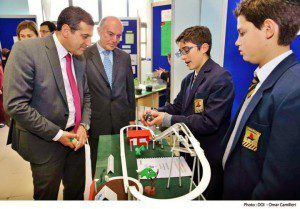 Attard sees the Expo as a great way to distribute resources, and meet kids and visitors. ‘I want students to get excited about science and for more students to engage with these subjects’. That’s why Attard always teaches them in a fun way, by creating games were students need to solve logic problems that involve science and computing to learn and achieve their goals, and that is exactly what his exhibit at the NSTF Expo does.
Attard sees the Expo as a great way to distribute resources, and meet kids and visitors. ‘I want students to get excited about science and for more students to engage with these subjects’. That’s why Attard always teaches them in a fun way, by creating games were students need to solve logic problems that involve science and computing to learn and achieve their goals, and that is exactly what his exhibit at the NSTF Expo does.
So why is the growth of science communication important in Malta? For Attard, it is all about helping people find out what they do well in and pushing students to reach out beyond their comfort zone and that mistakes are part of the learning experience.
Zammit understands this principle. Some of his family members suffer from asthma motivating him to research it for the NSTF Expo. ‘Slowly I managed to understand the mechanism and a few questions popped into my mind. The following process was turning those questions into a project by research, planning, and finally experimentation.’
By favouring the multidisciplinary approach students are not limited to only becoming developers, but can also tackle related problems requiring knowledge or skills from other disciplines. This is what attracted Attard to the NSTF Science Expo as it uses crafts, different skills, and logic to solve problems.
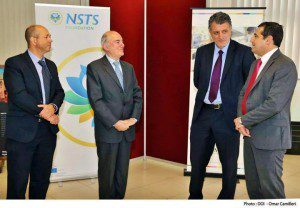 According to Zammit, the NSTF Expo and Programmes focus on analytical skills, public speaking, problem solving techniques, planning, critical thinking, creativity, and descriptive writing. ‘They all focus on character development rather than just the activity and provide an ensemble of quality development which is simply impossible to match by reading books and studying’. And, of course, there are amazing prizes.
According to Zammit, the NSTF Expo and Programmes focus on analytical skills, public speaking, problem solving techniques, planning, critical thinking, creativity, and descriptive writing. ‘They all focus on character development rather than just the activity and provide an ensemble of quality development which is simply impossible to match by reading books and studying’. And, of course, there are amazing prizes.
The Expo gave Zammit a platform for his work to be recognised by experts. ‘It has since motivated me to work harder because now I know what it feels like to win and create something useful. I want to repeat this success, hopefully at larger scales with ever bigger projects and aims.’
Maybe one day, it will be Zammit who will find himself teaching young students about science at the NSTF Expo.
The next NSTF Science Expo will be from 9–16 March for school visits, while the open weekend for everybody else will be on the 12–13 March.
For more information visit the NSTF Malta website or Facebook page.


